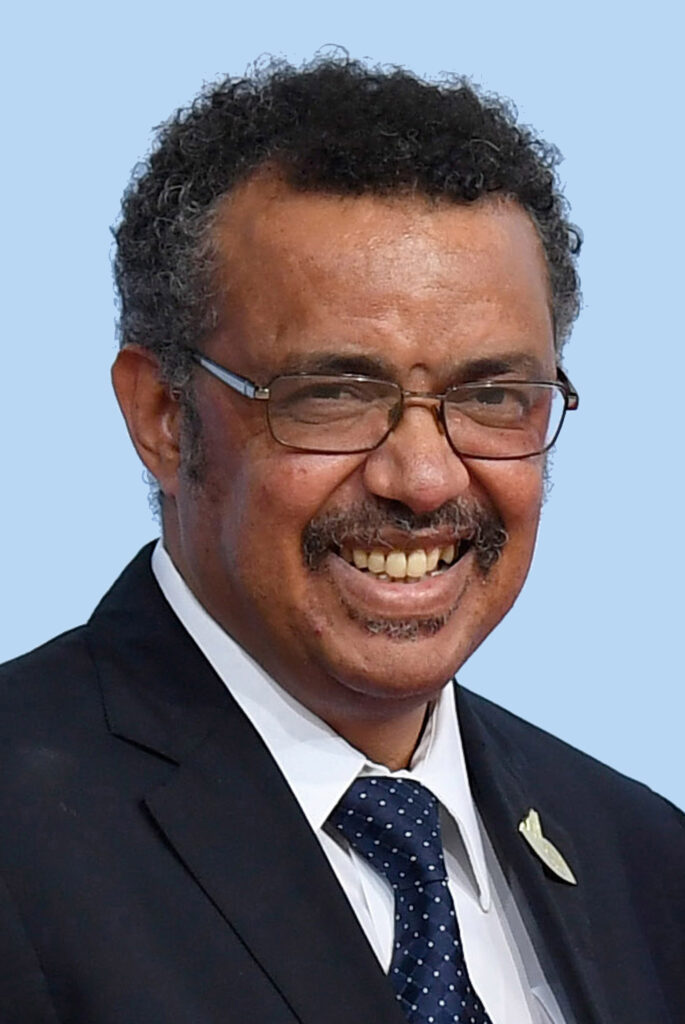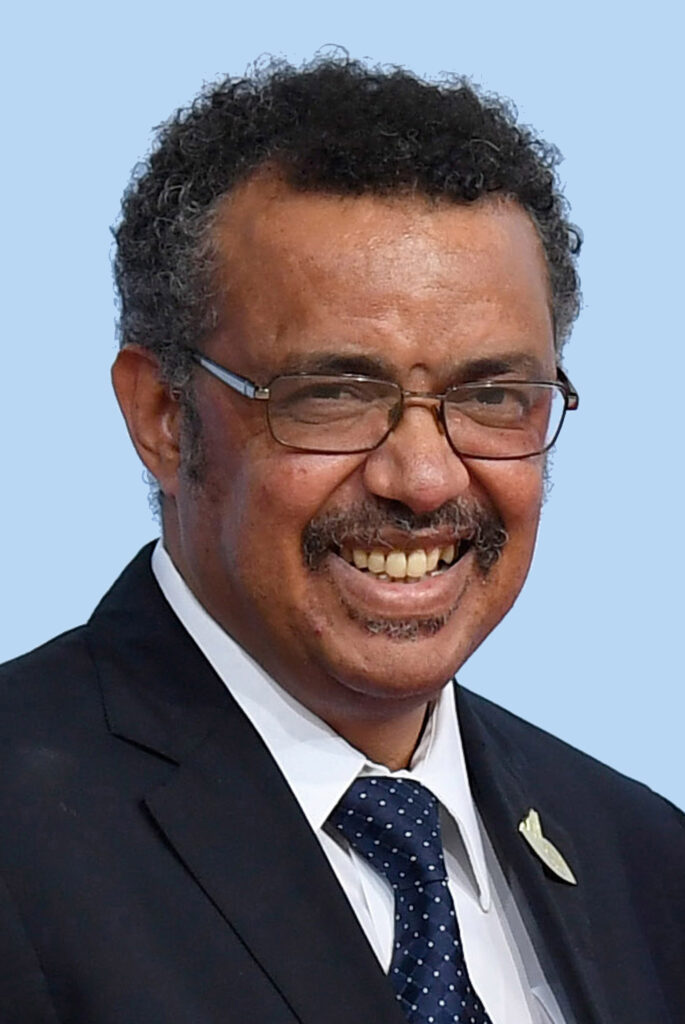
Article by Lalita Panicker, Consulting Editor, Views and Editor, Insight, Hindustan Times, New Delhi
“Me first”—that’s how Tedros Adhanom Ghebreyesus, head of the World Health Organization (WHO), described the wealthy world’s response to the COVID-19 pandemic when he kicked off negotiations for a global “pandemic treaty” in December 2021. Even before vaccines had proved safe and effective, rich countries had purchased enough doses to cover their entire population several times, whereas lower and middle-income countries had little or no vaccine. The pandemic treaty would address that searing inequity, Tedros vowed, along with many other problems identified during the COVID-19 pandemic, leaving the world better prepared for the next one. https://www.science.org/content/article/treaty-prepare-world-next-pandemic-hangs-balance?
That goal is now in jeopardy. After eight rounds of often contentious negotiations in Geneva, the WHO Pandemic Agreement is nearing the finish line. On 7 March, WHO sent member states a draft text that will be subject to one more round of negotiations that began 18 March. In late May, the final draft heads to the World Health Assembly, the annual gathering of WHO member states, for approval.
But deep divisions remain around the 31-page text, and some wonder whether there is enough time to resolve them properly. Observers from developing nations say the agreement doesn’t give them strong enough assurances that they will fare better during the next pandemic. “There is a systematic marginalization of developing country proposals on equity,” says Nithin Ramakrishnan, an India-based lawyer with the Third World Network, one of more than 100 “stakeholders” that provided inputs during the negotiations. “The process is being carefully designed to avoid any form of detailed legal obligations.”
Failing to reach an agreement would be a serious blow, says Alexandra Phelan, a global health specialist at the Johns Hopkins Centre for Health Security, another stakeholder. “This treaty fills a lot of gaps and is really important because it builds trust between countries about setting expectations and norms,” she says.
The spark for the treaty was a May 2021 report from an independent panel, convened by Tedros, that issued a scathing critique of the world’s response to the COVID-19 pandemic. Surveillance did not keep up with the virus, responses lacked a sense of urgency, health systems buckled, and countries hoarded masks, protective suits, and vaccines, the panel wrote, creating “a toxic cocktail which allowed the pandemic to turn into a catastrophic human crisis.”
To avoid a repeat, the pandemic agreement aims to bolster the world’s defences on many fronts. It seeks to strengthen surveillance for pathogens with “pandemic potential” and reduce the risk they will jump from animals to humans or leak out of a lab. Countries must also commit to better managing antimicrobial resistance, strengthening their health systems and sanitation, and making progress toward universal health coverage. (Separate talks aim to amend the International Health Regulations, which compel countries to report health emergencies within their borders.)
The agreement’s most controversial part is a global system to share pathogens and their genetic codes while ensuring access to “benefits” from the research—including vaccines. Developing countries are loath to share information about how pathogens are spreading and evolving if they can expect little in return, as happened during the COVID-19 pandemic. “Vaccine nationalism” may have cost up to 1.3 million lives in low- and middle-income countries by the end of 2021, one analysis suggests.
The current draft of the pandemic agreement attempts a fix. It proposes a Pathogen Access and Benefit-Sharing (PABS) System that compels countries to share sequence information and samples with WHO-coordinated networks and databases. In return for access to these data, manufacturers of diagnostics, therapeutics, and vaccines will be required to provide 10% of their products free of charge and 10% at not-for-profit prices “during public health emergencies of international concern or pandemics.”
Pharmaceutical companies resent such restrictions, however. “Scientists need rapid access to pathogens and data without conditions in order to quickly develop safe and effective countermeasures to save lives,” the International Federation of Pharmaceutical Manufacturers and Associations said in an 11 March statement.
Helen Clark, former prime minister of New Zealand and a co-chair of the panel that produced the critical 2021 report, is disappointed as well. “Member states should now be asking themselves: Are they really working towards an agreement which would ensure that the management of future pandemic threats is more collaborative, faster, smoother, and more equitable—or not,” Clark says.
For the text to be adopted as a classic international treaty, two-thirds of WHO’s member states must approve it at the World Health Assembly. If instead it follows a pathway used for “regulations,” the votes of only half of the member states are needed. Even if the agreement is adopted, countries can still decide not to join. As with other international treaties, a Conference of Parties will be formed to hammer out further details and supervise the treaty’s implementation.
/////
Millions worldwide live with type 1 diabetes, and for most the diagnosis came as a shock, following mysterious symptoms such as thirst and weight loss. But diabetes specialists have long known that certain blood tests can foretell the disease years earlier. That has left the field wrestling with a difficult question: Should healthy children get these blood tests, and would knowing about incipient diabetes help them? www.science.org/content/article/should-doctors-screen-all-kids-type-1-diabetes?
Now, as a first wave of studies indicates such testing can prevent life-threatening complications at diagnosis, and with a new treatment to delay disease onset, the answers are tipping toward “yes.” Mass screening studies are expanding throughout North America and Europe, and in September 2023, Italy became the first country to pass a law that aims to make screening, via finger-prick blood tests, available to all children. At a meeting in Florence last week, the Juvenile Diabetes Research Foundation (JDRF) presented draft recommendations on caring for those who test positive.
Mass screening is “a totally different way of thinking about type 1 diabetes,” says Emily Sims, a paediatric endocrinologist at the Indiana University School of Medicine. It relies not on signs of diabetes itself, such as high blood sugar, but on something of a crystal ball: autoantibodies in the blood that signal immune attacks on insulin-secreting cells in the pancreas. Once a child falls ill with full-blown diabetes, and typically needs insulin replacement therapy, those cells are mostly destroyed. In general, nearly 45% of children with at least two types of these autoantibodies develop full-blown diabetes within 5 years, and nearly 100% will get it in their lifetime.
There is currently no way to prevent type 1 diabetes. But recent studies suggest screening can help avert a life-threatening condition called diabetic ketoacidosis (DKA), which strikes when insulin levels fall perilously low and the body, unable to metabolize sugar, starts to break down fat for energy. Anywhere from 20% to 70% of children have DKA at the time they’re diagnosed; they’re typically admitted to the paediatric intensive care unit (PICU), sometimes with brain swelling, shock, and loss of consciousness.
Kurt Griffin a paediatric endocrinologist at Sanford Health says that with a positive autoantibody test, doctors can track a child’s progression, monitoring symptoms and glucose levels to catch a drop in insulin early and head off DKA. JDRF’s draft guidance—crafted with input from dozens of outside experts— suggests that a confirmed positive test should be followed by periodic medical monitoring for disease progression and symptoms, says Anastasia Albanese-O’Neill, JDRF’s associate vice president of community screening.
One project, in Germany, screened tens of thousands of children and tracked those who tested positive. It found that among 118 who progressed to full-blown diabetes, the rate of DKA was just 2.5%. In Colorado, a similar project recorded a DKA rate of about 4%, less than one-tenth of the usual prevalence there, says Marian Rewers, the project leader and a paediatric endocrinologist at the University of Colorado’s Barbara Davis Centre for Diabetes.
And now, for the first time, a drug can delay the onset of full-blown diabetes. In November 2022, the United States approved teplizumab, which is given intravenously for 2 weeks to people with autoantibodies and abnormal glucose levels and on average forestalls the disease by 2 to 3 years. It’s now under review by European drug authorities. Trials of other preventive treatments are underway. The potential to delay disease onset greatly strengthens the case for screening, says Emanuele Bosi, an endocrinologist at Vita-Salute San Raffaele University who helped craft the new Italian law.
Rachel Besser, a paediatric diabetologist at the University of Oxford, is now setting up a registry of people in the U.K. who have tested positive for autoantibodies to learn from their experience.
She’s also co-leading one arm of a new $24 million screening effort called EDENT1FI. It will screen 200,000 young people across seven European countries and explore issues such as when and how often to screen.
Rewers’s group is partnering with clinics in the Denver area to screen children just before kindergarten—because, he says, “if you have one shot” that’s the best age to test. His team is also experimenting with bundling autoantibody testing into one of two already-recommended blood tests for kids— lead testing in toddlers and cholesterol testing in older children. Many efforts, including Rewers’s, combine autoantibody and celiac disease screening in the same blood test.
////
Indian pharmaceutical manufacturer Akums on Saturday announced that it had launched the country’s first indigenous hydroxyurea oral solution, which is used for the treatment of sickle cell disease in children. The company said that the drug will be provided to the government at the cost of Rs 600 (US$ 7.24) , which is nearly 1% of the Rs 77,000 (US$ 928.58) that the medicine is currently available globally costs.
Another major benefit of the suspension manufactured by Akums is that it is stable at room temperature, unlike its global counterpart that requires storage in 2-8 o Celsius.
“Akums Drugs and Pharmaceuticals has achieved a ground-breaking milestone: the development of India’s first room temperature stable oral suspension of Hydroxyurea… Akums pledges to provide this life-changing medicine to the government at a cost of less than INR600,” the company said in its announcement.
The company did not mention the price for the medicine in general market.
This, however, is an important step as the government now has a mission to eliminate Sickle Cell Disease, which focuses not only screening people so that those carrying the trait do not unknowingly get married with each other but also providing treatment to those who already have the disease. Sickle Cell Disease is an inherited blood disorder that changes the shape of red blood cells, making them sickle-shaped and unable to carry the required amount of oxygen through the body. Hydroxyurea helps keep the red blood cells rounder and bigger to enable them to carry oxygen.
/////
Tiny robots that swim through our blood to deliver drugs or hunt down pathogens have been a staple of science fiction for decades. Although still distant, that vision came a step closer to reality last week, when electrical engineers at a meeting of the American Physical Society unveiled swimming microrobots that are smaller than grains of sand. Despite their diminutive size, the gizmos have enough computing power to perform a simple task on their own—rather than being constantly guided by external signals.
Researchers programmed the bots to swim through a solution of hydrogen peroxide and measure the temperature of the fluid using simple sensors. Over the span of a few seconds, a robot would dance in a herky-jerky fashion, its movement spelling out the temperature in degrees Celsius. “The robot motion is, in fact, the data,” engineer Maya Lassiter told meeting attendees. www.science.org/content/article/canine-peer-review-stolen-toxins-and-more-stories-you-might-have-missed-week?
////
COVID-19 vaccines powerfully protect against severe disease and death but do little to prevent infections. A new consortium with $57 million in funding will explore whether vaccines sprayed into the nose or inhaled by mouth do better, using an unusual research approach known as human challenge studies. www.science.org/content/article/news-glance-als-drug-setback-controls-ai-protein-design-and-rebuilding-ukrainian-labs?
The 5-year project, led by Imperial College London and announced this week, will administer these experimental mucosal vaccines to healthy volunteers and then attempt to infect them with SARS-CoV-2 or another coronavirus that causes common colds. Some mucosal vaccines are slowly moving through the traditional development process, and human challenges are intended to reveal quickly with small numbers of participants whether a candidate deserves to move to large, expensive efficacy trials. The Horizon Europe program and the Coalition for Epidemic Preparedness Innovations will co-fund the consortium, which will involve more than a dozen scientific teams.


